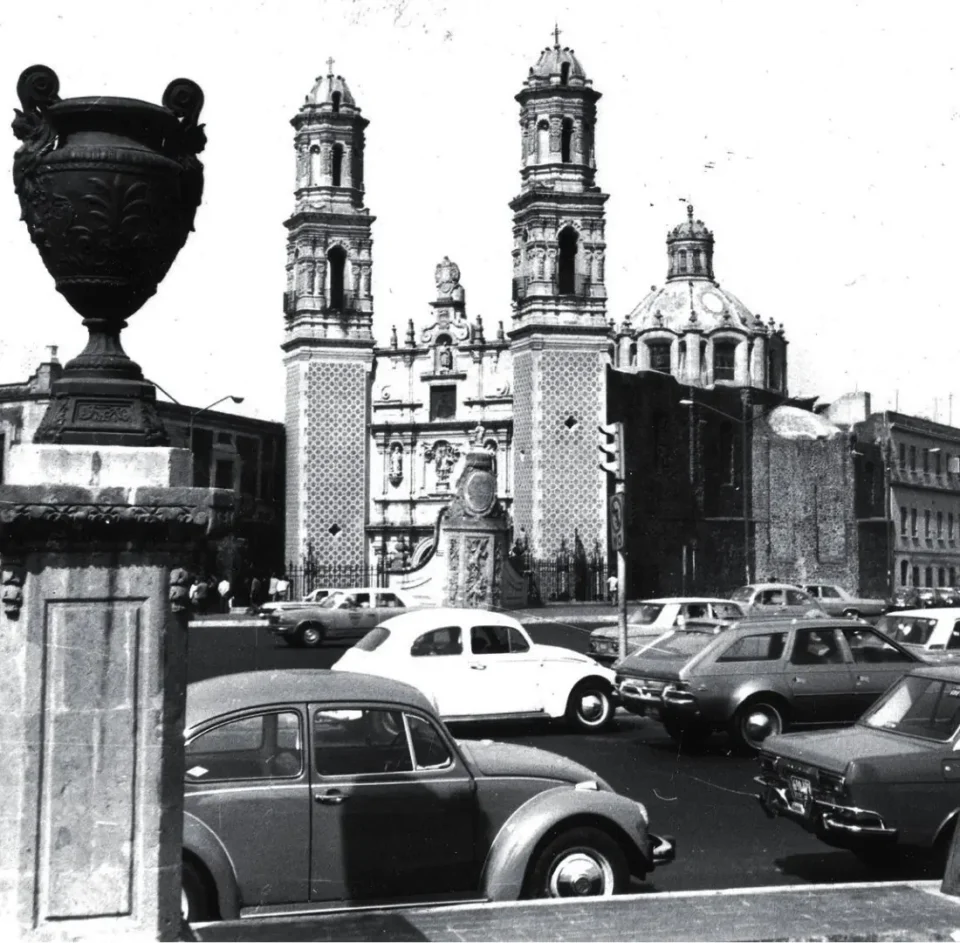You can also listen to an audio version of this article.
Next to one of the most ancestral historical roads of the metropolis, stands the venerable temple of San Hipólito, whose rich history dates back to the 16th century, endowing it with a profound legacy that places it as an outstanding enclave rooted in the heart of the city.
In addition to the few remaining vestiges of the emblematic ahuehuete, few tangible elements remain as witnesses of the historic Noche Triste or Noche de la Victoria, depending on where you look. Among these few remains is the temple of San Hipólito, which stands in a strategic location along the old Tlacopan road, emerging as a prominent landmark of that time.
Today, this precinct gathers a multitude of devotees every October 28 to pay homage to St. Jude Thaddeus, but its history has its roots in the fateful night of June 30, 1520.

On that tragic day, after the massacre at the Templo Mayor, the Spanish conquistadors and their allies were forced to flee the city of Mexico-Tenochtitlan, taking with them the treasures they had looted. In their tumultuous escape to the town of Tlacopan, today known as Tacuba, they were ambushed and harassed by Mexica troops.
The mud and waters of the lake trapped numerous men and horses, with estimates of Hispanic losses varying between eight hundred and sixty, according to Bernal Díaz del Castillo’s account, and five hundred Spaniards along with about five thousand Tlaxcalans, according to other sources.
Regardless of the exact number, it is evident that the casualties were notable. The chroniclers of the time relate that, at dawn on July 1, 1520, already in safety in Tacuba, Hernán Cortés shed bitter tears when he realized the magnitude of his defeat.
Later, after the fall of Tenochtitlan, in memory of the fallen in that fierce battle, the conqueror requested the construction of a hermitage in the place where his men perished.
According to the records of Luis González Obregón, the construction of what would eventually become the foundation of the temple of San Hipólito was entrusted to the African soldier named Juan Garrido. In its beginnings, it was known as the Hermitage of the Martyrs, and its dedication to Saint Hippolytus, whose festivity is celebrated on August 13, marked the day of the definitive victory of the Spaniards.
As time went by, other buildings began to spring up in the vicinity of the modest chapel. According to the book “Hospedería de Santo Tomás de Villanueva y su entorno” by historian María Cristina Montoya Rivero, in 1567, Friar Bernardino Álvarez asked the city council for a piece of land adjacent to the chapel for the construction of a hospital for the mentally ill. Thanks to the financial support of various benefactors, this complex was completed in the early 17th century and is considered the first psychiatric hospital in the country.
In 1736, a new baroque style temple was built to replace the original one, which was already in ruins.
Historical commemorations at the Temple of San Hipolito
Despite having undergone several modifications since then, the place still retains some remarkable elements, such as a peculiar architectural relief on the wall of the atrium. This work, designed by architect José Damián Ortiz de Castro, commemorates the events of five hundred years ago and refers to the omens that preceded the fall of Tenochtitlan.

The relief narrates the legend of the Labrador, a story that tells of the kidnapping of a peasant by an eagle, which took him to a dark cavern where Moctezuma II was also found. There, a mysterious voice ordered him to burn the emperor’s thigh as an act to reveal his arrogance and insensitivity. This same voice instructed him to return the next day to show the ruler what had happened and warn him of the consequences of his contemptuous behavior for his future.
In his work “México viejo: noticias históricas, tradiciones, leyendas y costumbres”, González Obregón takes up Fray Diego Durán’s version of this narrative and highlights the intrigue that the monument awakens: “Such is the meaning of this relief that many travelers and inhabitants of the city observe it without understanding it: each individual interprets it in his own way, no one knows the truth, and this is because the legend is documented in ancient chronicles that not everyone has had access to read”.

Today, like the legend, few are aware of the existence of this sculpture. Some even erroneously associate it with the Greek myth of the abduction of Ganymede. However, what is widely recognized is the devotion to St. Jude Thaddeus, venerated in this temple since 1982.
Since the viceregal era, this precinct has witnessed an outstanding annual celebration: “El paseo del pendón”, which commemorated the victory of the Spaniards over Mexico-Tenochtitlan and the founding of Mexico City.
According to historian Montoya Rivero, this festivity consisted of a procession that began on the eve of August 13 from the cabildo building in the Plaza Mayor to the Templo de San Hipólito; the following day, the procession was reversed.

The royal banner led this parade and was carried by the most senior alderman, while the guild of silversmiths carried a representation of Saint Hippolytus. This event, which included bullfights, brought together the viceroy, as well as civil and religious authorities, serving as an act of loyalty to the Crown. Over time, this festivity lost relevance and, over the years, popular participation dwindled until it fell into oblivion.
Centuries later, the temple continues to be a place of pilgrimage and celebration, but now it is mainly visited by devotees of St. Jude Thaddeus, who flock on the 28th of each month and especially during the month of October, filling the place and its surroundings with fervor and joy.
